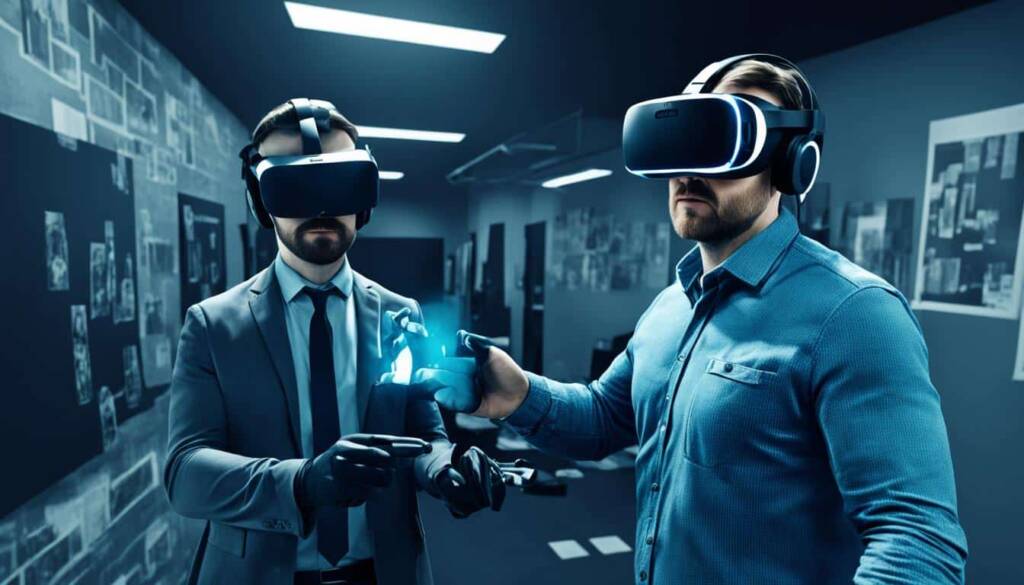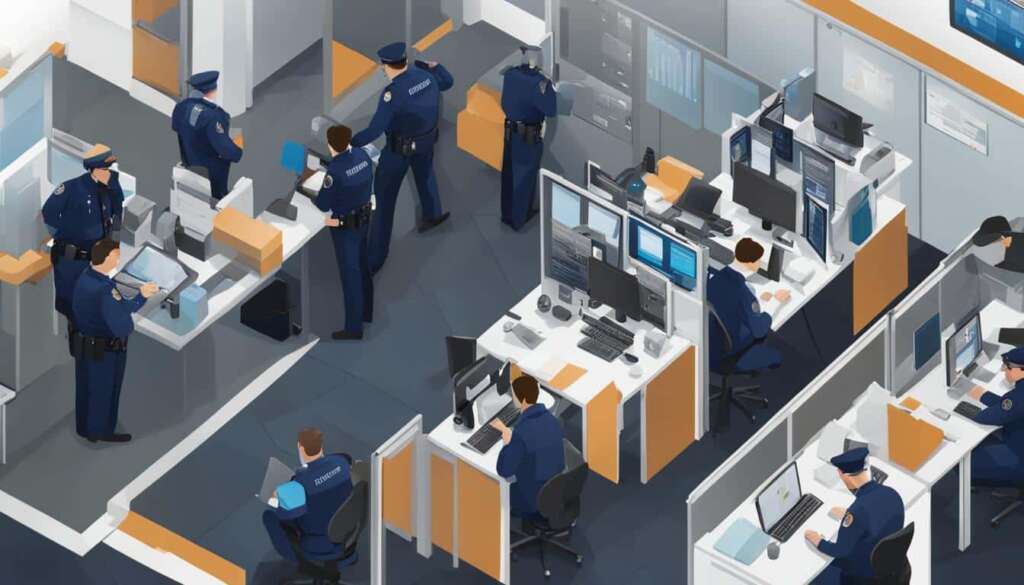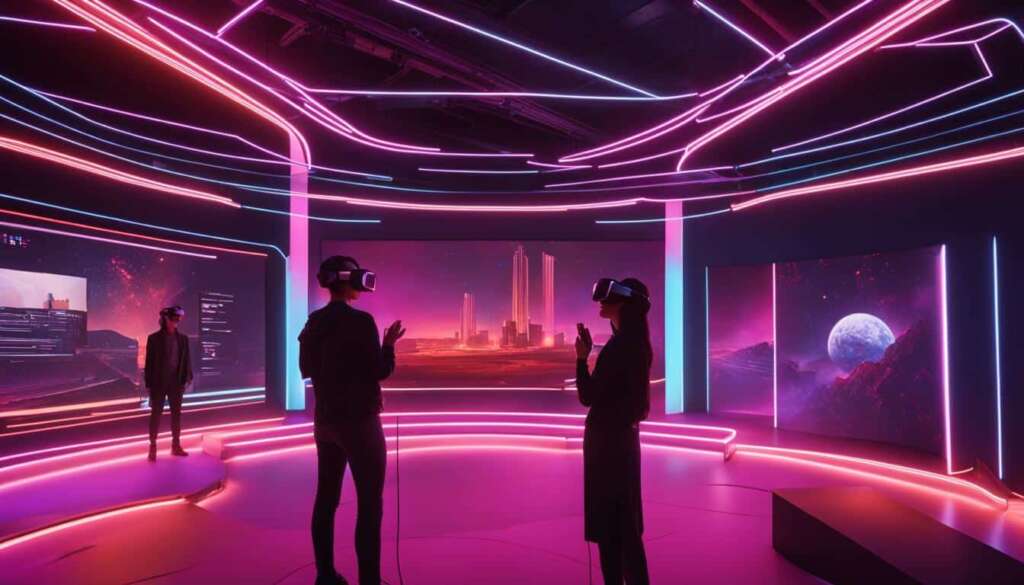Table of Contents
Virtual reality (VR) technology has the potential to revolutionize the way police understand and analyze the motivations behind criminal behavior. By immersing officers in realistic virtual environments, VR can provide valuable insights into why people commit crimes. This advancement in criminological research could lead to more effective crime prevention and investigation strategies.
The use of virtual reality allows police to recreate crime scenes, scenarios, and interactions with suspects in a controlled and immersive environment. This provides officers with a unique perspective and enables them to analyze the psychological factors that may have influenced criminal behavior. In addition, virtual reality simulations can be used to train law enforcement officers in realistic crime scenarios, improving their decision-making skills and overall effectiveness in preventing and solving crimes.
By leveraging virtual reality technology, researchers can collect vast amounts of data during crime scene reconstructions, allowing for the analysis of patterns and trends in criminal behavior. This data-driven approach to criminological research can lead to the development of more accurate predictive models and intervention strategies.
Moreover, implementing virtual reality in police training programs can create realistic and immersive scenarios for officers to practice their investigative and decision-making skills. This type of training can help officers develop the necessary skills and confidence to handle real-life situations more effectively. Additionally, virtual reality can be utilized in the interrogation process, allowing officers to practice their questioning techniques and evaluate suspect responses in a controlled environment.
In conclusion, virtual reality technology has the potential to significantly enhance crime analysis, training, and investigations conducted by the police. By providing officers with a deeper understanding of criminal motivations and behavior, VR can contribute to more effective crime prevention and investigation strategies, ultimately making our communities safer.
The Power of Virtual Reality in Crime Analysis
Virtual reality (VR) technology offers a powerful tool for police in crime analysis, enabling them to recreate crime scenes, scenarios, and interactions with suspects in a controlled and immersive environment. This innovative approach provides officers with a unique perspective, allowing them to analyze the psychological factors that may have influenced criminal behavior. By immersing themselves in virtual crime scenes, officers can gain valuable insights into the motives and intentions of perpetrators.
One of the key advantages of using virtual reality in crime analysis is the ability to employ natural language processing (NLP) algorithms. These algorithms allow law enforcement to identify and analyze keywords used by suspects during investigations. By analyzing these keywords, officers can develop more accurate profiles and strategies to aid in their investigations. This integration of NLP with virtual reality technology has the potential to greatly enhance police investigations and improve overall crime prevention efforts.
“Virtual reality technology allows police to explore crime scenes in a way that was previously unimaginable. This level of immersion and analysis provides invaluable insights into the minds of criminals, ultimately leading to more effective law enforcement strategies.”
Enhancing Police Investigations with Virtual Reality
Through the use of virtual reality, police can explore and interact with crime scenes in a manner that was previously impossible. This technology enables officers to examine every detail, assess environmental factors, and observe how individuals may have interacted within the scene. By reconstructing these scenarios virtually, investigators can analyze the sequence of events and potential points of vulnerability. This level of insight can help identify new lines of inquiry, corroborate witness testimonies, and ultimately strengthen the investigation process.
Moreover, virtual reality simulations allow law enforcement to recreate interactions with suspects. By observing suspects’ body language, gestures, and other non-verbal cues, officers can develop a deeper understanding of their behavior and potential motives. This insight can aid in constructing accurate profiles, providing valuable information for ongoing investigations.
Advancing Crime Analysis Strategies
Virtual reality’s impact on crime analysis extends beyond individual cases. By utilizing this technology, law enforcement agencies can collect vast amounts of data from crime scene reconstructions, enabling the identification of patterns and trends in criminal behavior. The ability to analyze large datasets can help researchers and specialists to develop more accurate predictive models and intervention strategies.
Additionally, virtual reality simulations can be incorporated into police training programs, enhancing officers’ decision-making skills and preparedness for real-life scenarios. By engaging in immersive virtual environments, officers can practice handling high-stress situations, such as hostage negotiations or active shooter incidents. This type of training serves to improve their responses, critical thinking, and overall effectiveness in preventing and solving crimes.
Advancing Criminological Research with Virtual Reality
Virtual reality technology is revolutionizing the field of criminology by providing researchers with a powerful tool to understand and analyze criminal behavior. By immersing themselves in virtual crime scenarios, researchers can gain a deeper understanding of the thought processes and motivations behind criminal actions.
One of the key advantages of virtual reality technology is its ability to collect vast amounts of data during crime scene reconstructions. This data-driven approach allows researchers to analyze patterns and trends in criminal behavior, providing valuable insights that can inform the development of more accurate predictive models and intervention strategies.
But virtual reality’s applications in criminological research go beyond data analysis. It also has the potential to transform police training and improve the effectiveness of law enforcement officers in preventing and solving crimes.
Enhancing Police Training
Virtual reality simulations can recreate realistic crime scenarios, allowing law enforcement officers to practice their investigative and decision-making skills in a controlled environment. By exposing officers to high-stress situations, such as hostage negotiations or active shooter incidents, VR training can help them develop the necessary skills and confidence to handle real-life emergencies more effectively.
Improving Crime Prevention and Investigation
By utilizing virtual reality technology, police can immerse themselves in crime scenes and interact with virtual suspects, gaining valuable insights into the underlying motivations and psychological factors that may have influenced criminal behavior. This innovative approach to crime analysis enables law enforcement to develop more accurate profiles and strategies, leading to improved crime prevention and investigation efforts.
Virtual reality’s immersive and data-driven approach has the potential to transform the field of criminology, providing researchers and law enforcement with new tools to understand, prevent, and solve crimes.
The integration of virtual reality in criminological research and police training represents a significant advancement in the fight against crime. Through these applications, virtual reality technology is helping us unlock deeper insights into criminal behavior, providing a pathway to a safer and more secure society.
Implementing Virtual Reality in Police Training and Investigations
Virtual reality (VR) technology has the potential to revolutionize law enforcement practices by integrating immersive scenarios into police training programs. By simulating realistic and high-stress situations like hostage negotiations or active shooter incidents, VR training equips officers with the necessary skills and confidence to handle real-life encounters more effectively.
One area where virtual reality can make a significant impact is in the interrogation process. By utilizing VR, officers can practice their questioning techniques and evaluate suspect responses in a controlled environment. This allows for the refinement of interviewing skills, ensuring that the crucial information is gathered accurately and efficiently.
The integration of virtual reality in police training and investigations has the potential to transform law enforcement practices. By providing officers with lifelike scenarios and simulations, VR enables them to gain a better understanding of complex situations and hone their decision-making skills. Consequently, this improved training will ultimately enhance the outcomes of criminal investigations, leading to a safer and more secure society.
FAQ
How can virtual reality help police understand and analyze criminal behavior?
Virtual reality technology allows police to immerse themselves in realistic virtual environments, recreating crime scenes and interactions with suspects. This immersive experience provides valuable insights into the psychological factors that may have influenced criminal behavior.
How does virtual reality aid in developing accurate profiles and strategies for investigations?
By utilizing natural language processing (NLP) algorithms, virtual reality can help identify and analyze keywords used by suspects during investigations. This aids in the development of more accurate profiles and strategies for law enforcement officers.
What potential does virtual reality have in criminological research?
Virtual reality technology can collect vast amounts of data during crime scene reconstructions, allowing researchers to analyze patterns and trends in criminal behavior. This enhances our understanding of the motivations and thought processes behind criminal actions.
How can virtual reality improve police training programs?
Virtual reality can create realistic and immersive scenarios for officers to practice their investigative and decision-making skills. It simulates high-stress situations, such as hostage negotiations, to develop the necessary skills and confidence to handle real-life incidents more effectively.













